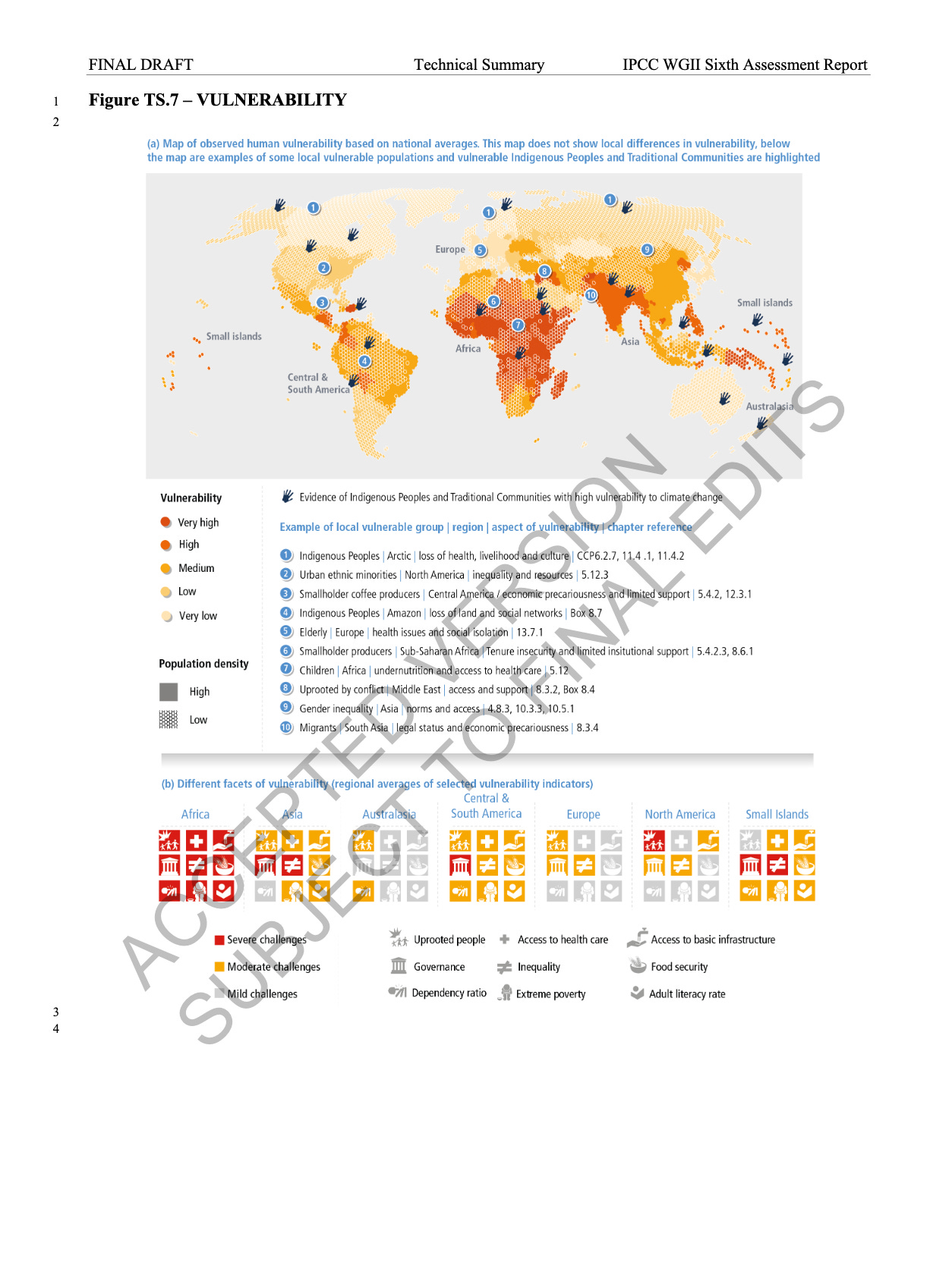Edwin Castellanos & Joern Birkmann; IPCC AR6 WG2 Coordinating Lead Authors
The latest IPCC report on adaptation is out, and it came out 4 days after Russia invaded Ukraine.
If you're asking yourself: what did I miss?
The UN Secretary General described it as "an atlas of human suffering". He said, I quote: “Nearly half of humanity is in the danger zone right now”.
For the first time, scientists have given us a number, 3.3 billion people, who are highly vulnerable to the impacts of climate change.
Second, we now know where many of them are located. And while there are groups in all countries vulnerable to climate change, the IPCC report shows that in some places - called “global hotspots” - the level of human vulnerability is a lot higher.
For example, in the most vulnerable regions, deaths due to floods, storms and droughts are 15 times higher per event compared to countries like Germany and the United States.
There’s a map (see below) in the report which shows where many of the most vulnerable are, and it includes parts of East Africa, South Asia, Central America, and the small island states.
If you’re nodding, and saying to yourself “hmm that makes sense”. In fact, this map was highly contested by delegates from both rich and poor countries at the approval session for the Summary for Policy Makers. Those objections led to it being removed from the summary - the most widely read part of the 3,500-page report.
To find out why, and to learn about the highlights of this important report, stay tuned for my interview with IPCC authors Joern Birkmann from Germany and Edwin Castellanos from Guatemala. It’s not all gloom and doom, there are even a few reasons to be hopeful.
We talked about:
5.08 Billions more people will face dengue risk by the end of the century, and among them many people in non-tropical regions such as Europe
7.54 Reflections on the final approval session
11.42 Why language matters so very much in the negotiations between governments and scientists over the Summary for PolicyMakers
12.23 Imbalance between developing and developed countries in terms of who speaks up in the approval session, and size of delegations
13.53 What happened with the figure on vulnerability (see below) at the final approval session. Why was it contested?
16.01 The art of defining “policy-prescriptive”
17.14 Quantifying the 3.3 billion number: a first for the IPCC and an important message of the report
19.17 What else is new? Approaches to vulnerability have changed from the Fifth to the Sixth Assessment
19:43 First ever reference to “colonialism” as a driver of vulnerability, few governments contested this
21.55 Global hotspots of human vulnerability
24.41 The idea of climate-resilient development is something new & important in this report
25.55 Regional approaches were also a highlight
28.21 What’s the good news? The Sixth Assessment has a lot more literature on adaptation; the challenge is how to assess the effectiveness of what’s happening, especially in developing countries
34.19 How are we doing on adapting to extreme heat events in Europe?















#22 Behind the scenes of the mega-report on adaptation